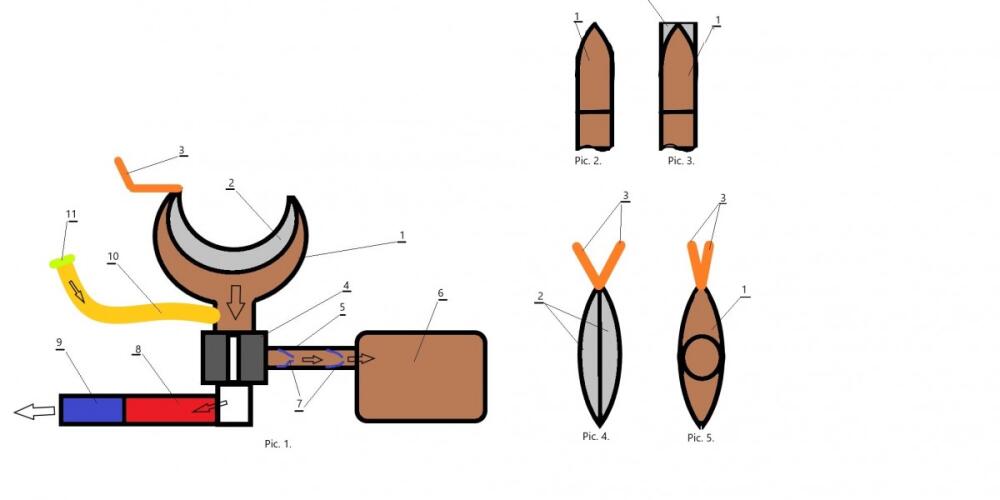
Astronauts also have the physical need to go to the toilet in space. Sometimes when they are sick they have to vomit. In space, all this is a problem because there is no gravity so bodily secretions float freely in the air inside the space cells. To prevent this from happening, astronauts have to do everything in plastic bags that are immediately carefully closed and disposed of.
To make it easier for astronauts to stay in space stations, it is necessary to make a toilet that prevents uncontrolled leakage of body fluids. A toilet like this would have to work on the same principle as machine milking machines. Such devices have a vacuum that sucks milk and stores it in containers.
Such a space toilet is shown in the drawing above.
The whole process is based on a small fan that creates a vacuum and draws body fluids and excretions into the toilet bowl (1), and draws all solid and liquid contents into the tank (6).
The shell (1) of this toilet is in the shape of a slice of lemon covering the body from below on three sides, which is seen laterally on the Pic. 1.
The shell (1) has an open and closed position.
The open position of the shell (1) is seen on Pic. 3. on the front, and on the Pic. 5 from above.
The closed position of the shell (1) is seen on Pic. 2. from the front side, and Pic. 4. from above.
The shell (1) is closed by an elastic cover (2) consisting of two parts which are assembled in the closed position, while they are spaced in the open position.
The elastic cover (2) is opened by the opening handle (3). When this opening handle (3) is squeezed, the elastic cover (2) opens, and when the pressure on the opening handle (3) stops, the elastic cover (2) closes automatically.
When the opening handle (3) is pressed, the air fan (9) and the centrifugal separator (4) are switched on. The air fan (9) draws air from the shell (1) towards itself and thus creates a vacuum. The vacuum pulls the contents out of the shell (1). This content passes through a centrifugal separator (4) which presses solid and liquid particles into the connecting pipe (5) through which the contents go to the waste tank (6). The connecting pipe (5) has valves (7) in it which prevent the return of the contents in the opposite direction.
Air and gases pass through the centrifugal separator (4) and reach the air filter (8) which cleans the air of harmful gases and unpleasant odors.
An elastic hose (10) is connected to the shell (1), into which the contents of the vomit are collected. This elastic hose (10) has a vomit cover (11) at its end. When this vomit cover (11) is opened, the air fan (9) and the centrifugal separator (4) are automatically switched on, whereby the vomit contents are also collected in the waste tank (6). As soon as the vomit cover (11) is closed, the air fan (9) and the centrifugal separator (4) are switched off immediately.
Other of my technical analyzes and innovations can be found in this book.
Tags
Featured articles